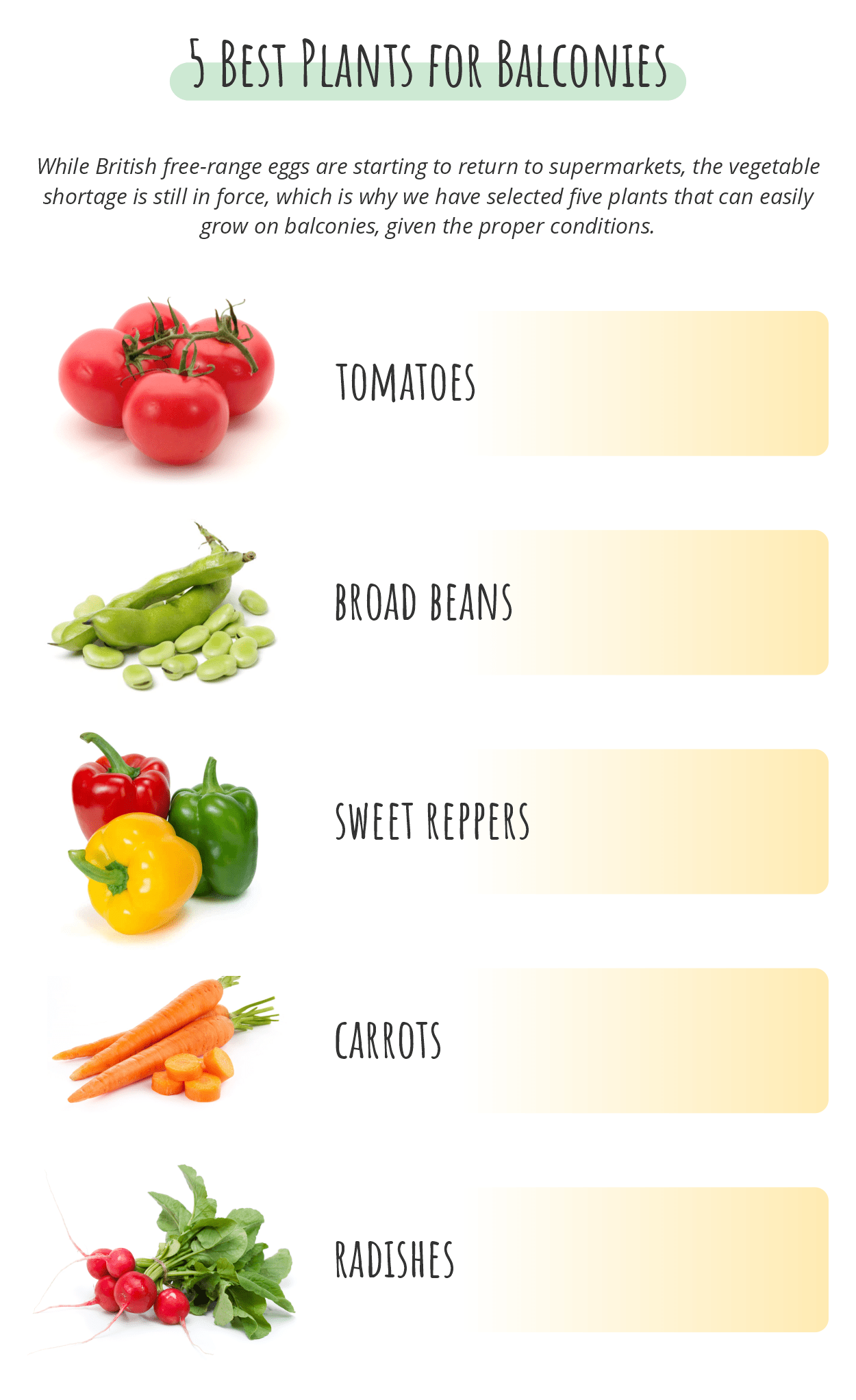As a result of the currently limited availability of produce in the UK due to poor worldwide fruit and vegetable harvests, an increasing number of customers are looking for advice on how to grow tomatoes and other plants on their balconies. This April so far the number of inquiries increased by 55% compared to April 2022.
While British free-range eggs are starting to return to supermarkets, the vegetable shortage is still in force, which is why we have selected five plants that can easily grow on balconies, given the proper conditions.

How to cultivate a balcony vegetable garden
Container gardening is the ideal solution for people who live in densely populated city areas. Growing vegetables in a limited space is not as difficult as one might think – here are some easy to follow tips.
Tomatoes
One of the most productive crops to grow on a balcony, tomatoes are rather easy to take care of. They need a lot of sun (at least 6 hours daily of direct light) and water, and are resistant to wind, as long as they are supported by a stick tied with some type of string.
You need to start in mid-spring by sowing in covered indoor pots. When the plant gets big enough, usually in early summer, it is time to move it out to the balcony. It’s recommended that you use stable pots, at least 12 inches deep and good quality compost. Harvest as soon as a fruit is ripe, which stimulates the production of more tomatoes.
Broad Beans
Broad beans is another sun worshipper that will happily thrive on any British balcony with southern or southwestern exposure. The best thing about this crop is that it can be sown from autumn into late spring, giving valuable harvests when many other vegetables are not available.
When it comes to container gardening, dwarf varieties are preferred as they only reach a height of 50cm. Provide the plant with a sunny and sheltered site and a small, trellis-like construction for the vines, water it regularly, and it will reward you with a bountiful harvest.
Sweet Peppers
As you are going to grow a limited number of plants, you had better choose what I like to call insatiable producers. The perfect example is sweet peppers, which are markedly appealing with their attractive colourful fruits. You will need a sheltered, sunny balcony, preferably in the milder parts of the country.
Unless the forecast predicts a long, hot summer, my advice is to select a pepper variety with smaller fruits as they need a shorter growing season. Late March or early April is the best time to sow the seeds, while in May you must place the plants in their final outdoor containers. Pots need to be at least one foot deep for proper growth.
Carrots
These vitamin bombs are among my favourite grow-your-own vegetables. It is of utmost importance to select the right variety, as standard types need a lot of room for their roots to grow. Fortunately, there are plenty of options, each with excellent taste.
What I love about carrots is that they can be harvested almost year-round, with sowing starting from early spring. All they need is well-drained, slightly moist soil and, of course, plenty of sunlight. Be careful not to waterlog the roots as they will quickly rot away.
Radishes
Balcony gardeners who want to see the result of their work quickly should plant radishes, as they are super fast growers. What is more, they perform perfectly well in tiny containers as small as 6-10 inches deep, which makes them suitable for growing even on a windowsill.
Except for winter radishes that are sown in July or August, you can start all other varieties in spring. Depending on the variety, harvesting may be carried out between 24 and 60 days after planting. Keeping the soil moist may be tricky, but it is the only way to ensure proper growth.
“Even if it was not for the ongoing food shortage in the UK, having a vegetable garden on your balcony is a great idea. Do-it-yourself vegetables are scrumptious, wholesome, and easy to grow. If you have a balcony with the proper exposure and devote some time and effort, the home-grown salad is just a few weeks away.” – comments Niki Strupnenski from GardenersLondon
